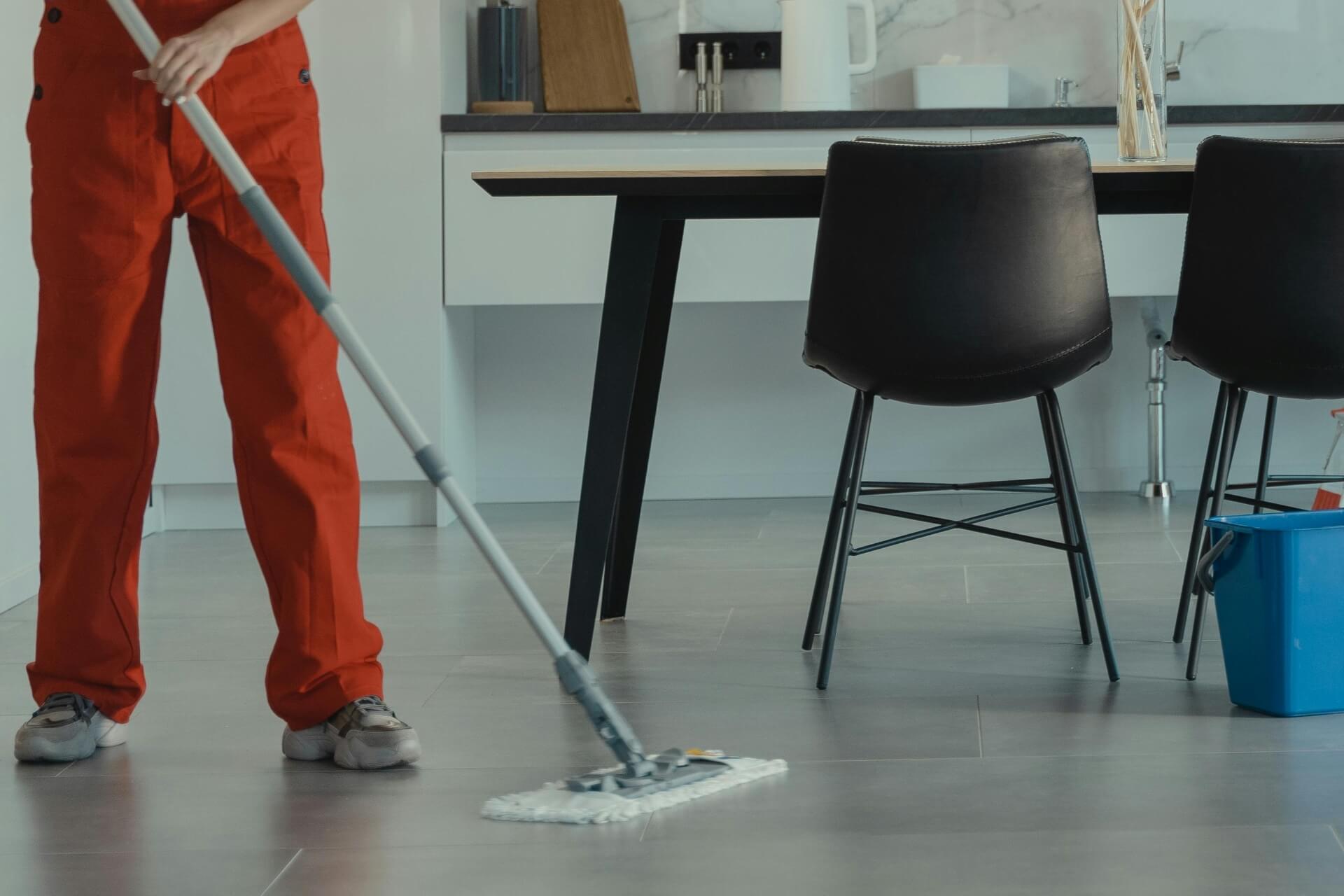Welcome to Pro Corner: Tile Talk with FILA Solutions
Your Ultimate Resource for Surface Care Insights
In 2024, FILA Solutions is thrilled to debut a series of monthly blog posts tailored exclusively for contractors, professional tilers, applicators, and all enthusiasts of pristine surfaces. Introducing “Pro Corner: Tile Talk with FILA Solutions” – your go-to destination for expert advice, insider tips, and solutions to those nagging questions in the world of surface care.
In our debut post, “Tile Cleaning Fundamentals,” we will explore the essential cleaning and maintenance practices relevant to every contractor and tile installer.
First, let’s explore the fundamentals of tile cleaning, including the pH scale’s importance.
Understanding the pH Scale for Effective Surface Cleaning
Understanding the pH scale is crucial for selecting the right type of cleaner to remove specific types of stains from surfaces.
Ph Scale Basics: Types Of Stains
Understanding the types of stains and their respective treatments is essential for effective cleaning. Stains can generally be categorized into two main groups: inorganic stains and organic stains.
Inorganic Stains:
- Non-carbon-based stains such as limescale, cementitious grout haze, and soap scum
- They are best treated with acid cleaners
Organic Stains:
- Carbon-based stains, including food stains, coffee spills, and pencil marks
- Alkaline cleaners are the preferred choice for tackling organic stains
When considering the use of cleaners, it’s essential to understand their placement along the pH scale. Acid cleaners, suitable for inorganic stains, fall on the lower end of the pH scale, while alkaline cleaners, ideal for organic stains, are positioned towards the higher end of the scale. By matching the pH of the cleaner to the type of stain being treated, you can achieve optimal cleaning results while minimizing the risk of damage to the surface.
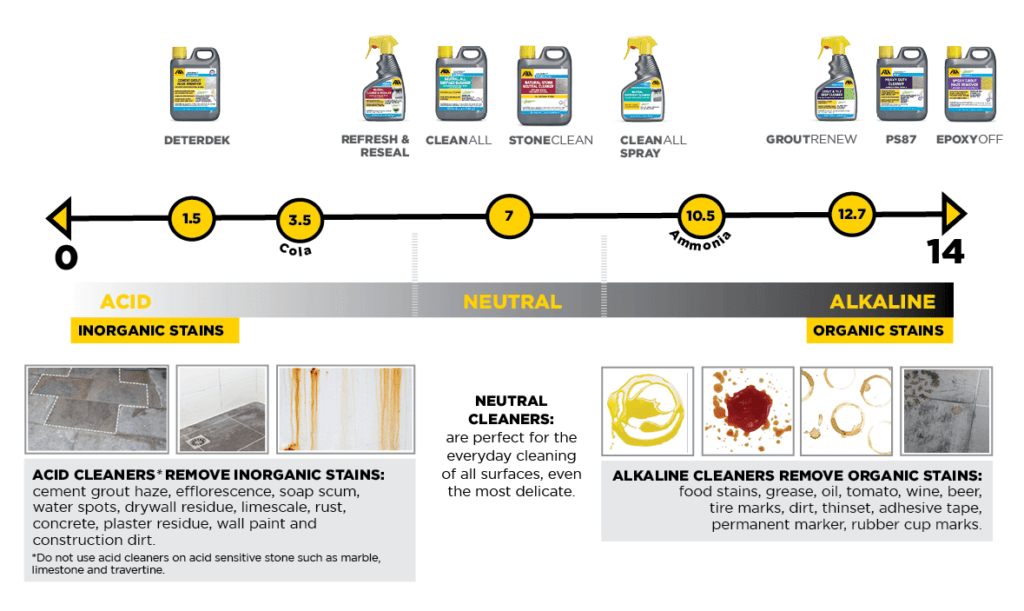
Alkaline Cleaners for Organic Stains
Moving towards the alkaline end of the pH scale, we introduce two powerhouse cleaners: PS87 and EPOXY OFF. PS87 is formulated for use on porcelain and ceramic tiles, all natural stones, quarry tile, concrete, terracotta, and saltillo. At the same time, EPOXY OFF is designed for porcelain and ceramic tiles, glass mosaics, and quarry tiles.
With a pH level of ≈ 12.7, these cleaners are highly alkaline. They also excel at removing organic stains like grease, oil, tomato, wine, beer, epoxy, urethane, pre-mixed non-cementitious grout residue, tire marks, thinset, adhesive tape, sharper marker, and rubber cup marks.
Benefits of PS87 and EPOXY OFF
PS87
- PS87 is a heavy-duty cleaner that acts as a stain remover, cleaner, and stripper
- Specifically formulated for porcelain tiles to preserve surfaces without causing damage
- Features user-friendly application methods
- Contains biodegradable ingredients for environmental sustainability
- Water-based
- Versatile application for both interior and exterior surfaces
EPOXY OFF
- EPOXY OFF is an epoxy, urethane, and pre-mixed grout residue remover
- Features a gel-like consistency for ease of use on vertical surfaces
- Surface-friendly formula suitable for various applications
- Water-based
- Emits a pleasant almond scent
- Contains biodegradable ingredients, promoting eco-friendliness
- Versatile application for both interior and exterior surfaces
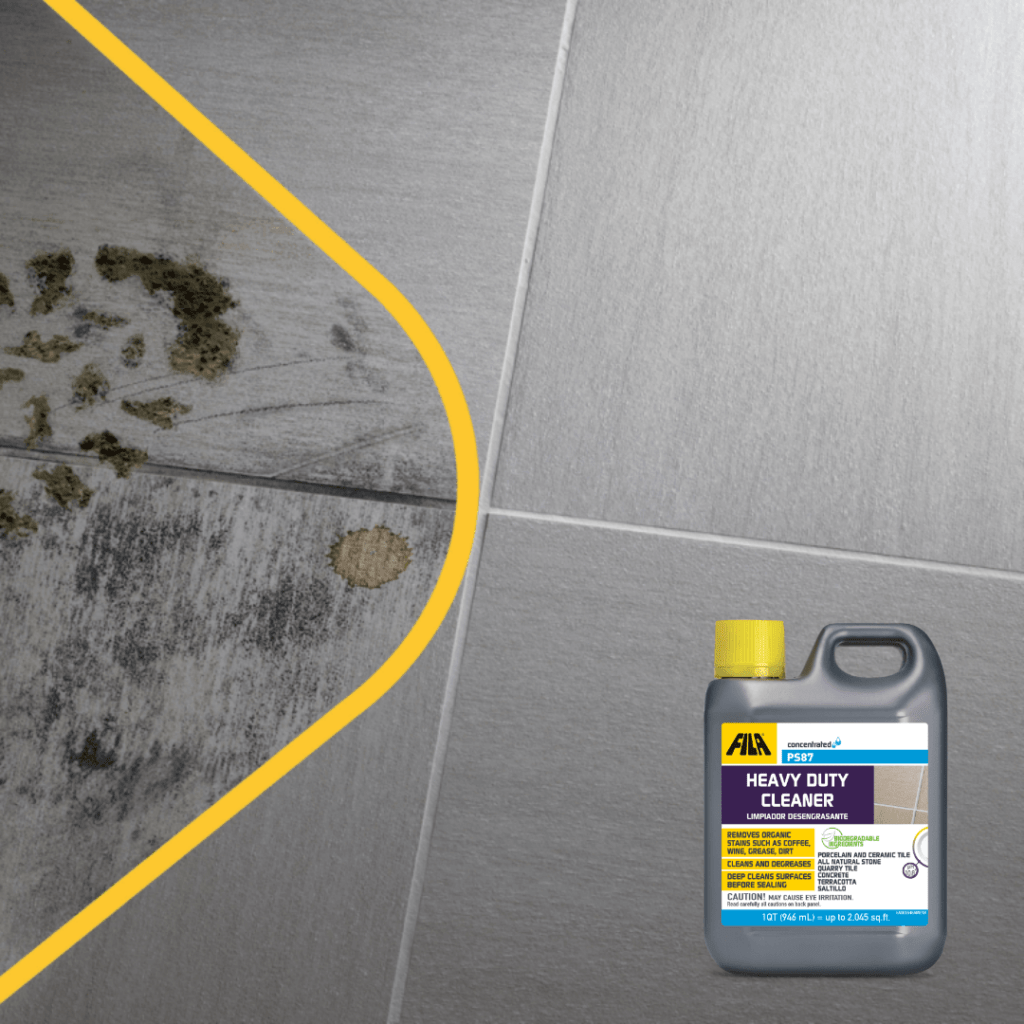
Acid Cleaners for Inorganic Stains
On the opposite end of the pH spectrum, we have DETERDEK, our buffered acid cleaner. The pH scale indicates acidity levels, with lower numbers denoting higher acidity. With a pH level of 1.6, DETERDEK is slightly more acidic than common household items like Coca-Cola (pH ≈ 3).
This acid cleaner is specifically formulated for surfaces such as porcelain and ceramic tile, acid-resistant stone, quarry tile, and terracotta. It effectively removes inorganic stains such as cementitious grout haze, soap scum, water spots, drywall residue, limescale residue, rust, concrete, plaster residue, wall paint and construction dirt.
Advantages of DETERDEK
- DETERDEK features a concentrated formula with high coverage rates
- Eco-friendly formula that does not emit harmful fumes
- Acts as a safe alternative to muriatic acid
- Does not harm aluminum and steel trims
- Functions as both a cleaner and limescale remover
- Enriched with biodegradable ingredients for sustainability
Neutral Cleaners for Everyday Maintenance
At the center of the pH scale is 7, which represents neutral.
Our neutral cleaners, CLEANALL and STONECLEAN, are precisely positioned along this midpoint when diluted at a ratio of 1:200, equivalent to one and a half tablespoons per gallon of water. With its pH-balanced formula, CLEANALL is neutral on surfaces, which means that it is safe for even the most delicate surfaces.
What If I Don’t Know What The Stain Is?
Sometimes dirt is so layered on the tile surface that it’s hard to tell what type of stain it is.
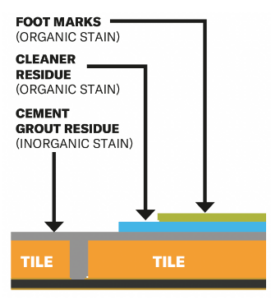
When in doubt, use this method on tile surfaces (do not use this method on stone):
- Remove organic stains (deep clean the surface) with PS87.
- Remove any leftover cement grout residue with DETERDEK.
- If the above cleaners don’t work, then the stain may have been sealed. Use PROSTRIP to strip the sealer and the stain.
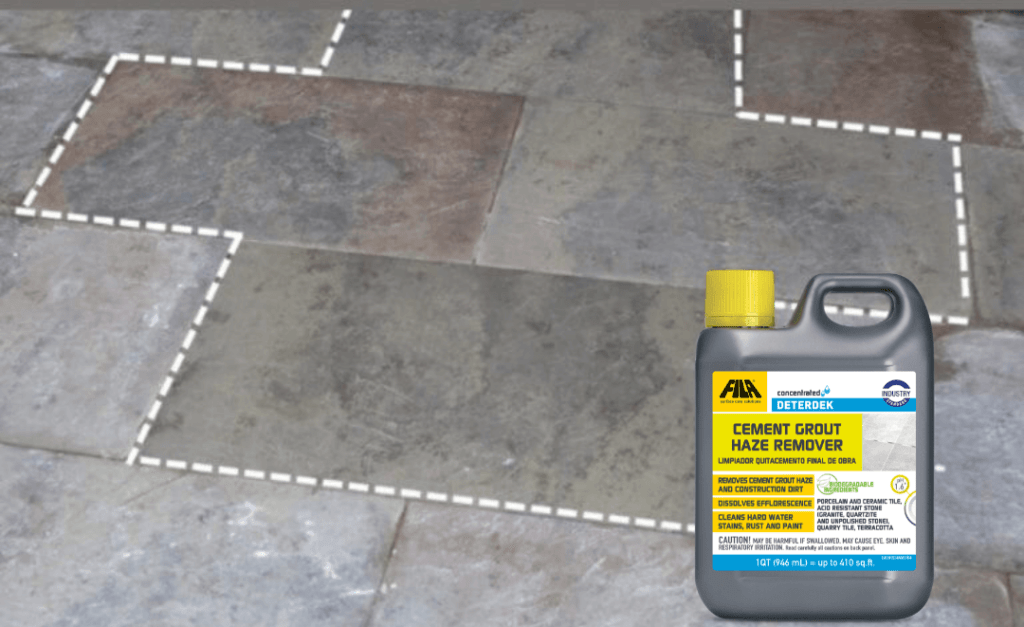
Important Considerations
While acid cleaners like DETERDEK are highly effective for certain types of stains, it’s crucial to note that they should never be used on acid-sensitive stones such as marble, limestone, and travertine. Doing so can result in etching and damage to the surface. For further insights into stone cleaning, stay tuned for our upcoming blog post, where we’ll delve into specific techniques for maintaining the pristine condition of stone surfaces.
By understanding the pH scale and selecting the appropriate cleaner for the task, contractors can achieve optimal cleaning results.
Unlock Expert Tile Care Tips
Stay Tuned for More Exclusive Insights Ahead
We hope you found our first post in the series informative and insightful, focusing on tile cleaning fundamentals. By understanding the importance of proper cleaning techniques and maintenance strategies, you can effectively preserve the beauty and longevity of your tiled surfaces.
In our next blog post, we’ll explore the intricacies of stone cleaning and offer considerations for maintaining stone surfaces’ flawless condition. Stay tuned for more valuable tips and expert advice.
